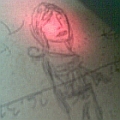jmolyson
Posts: 174
Joined: 11/27/2006
Status: offline

|
This is an interesting discussion so I spent a little time looking at the historical record of successful attacks by aircraft against Japanese submarines.
General Purpose Bombs. GP bombs have contact fuses and are ineffective against submerged submarines. They have rounded aerodynamic noses which can cause ricochet off ocean surface. WWII Japanese submarine damage or kills were credited to the following Allied aircraft using GP bombs by the USN. Data does not include unsuccessful attacks by this ordnance. Note that no submerged submarines were known to have been killed by this ordnance. Also note that three of the five known hits were scored before depth charges were available to arm the attacking unit’s aircraft.
Unit //Unit //Air ordnance//Date//Sub//Status//Area//Result
VB-6 //SBD Dauntless //GP bombs//10 Dec 1941//I-70 //Surfaced//Off Hawaii//Dauntless badly damaged sub
VS-6 //SBD Dauntless//GP bombs//10 Dec 1941//I-70 //Surfaced//Off Hawaii//Dauntless again badly damaged sub Sunk by destroyer next day
RCAF Sqn No. 115 //Bolingbroke//GP bombs//7 Jul 1942//RO-32//Surfaced//Off Alaska//Bolingbroke badly damaged sub. Sunk by destroyers called to scene.
TF 38//TF 38 Avenger//GP bombs//18 Jul 1945//I-372//In harbor//Off Shokaku//Sunk during harbor attack
VPB-111 //PB4Y-1 Liberator with radar//GP bombs and strafing by 0.50 caliber machine guns//5 Jan 1945//Kaiten (?) Midget Submarine //Surfaced//Chichi Jima//Sunk
Mark 17 – type depth bombs. The Mark 17 (aka MkXVII) 350lb depth bomb appeared in early spring of 1942 followed by the 650lb Mark 29 in May 1942. These could be carried on all Allied aircraft that could carry the corresponding weight of ordnance. The first warheads (explosive charge and casing) were standard aircraft bombs with rounded noses fitted with hydrostatic fuses rather than impact ones. The original rounded heads caused some ricochet problems so flat-nose attachments were quickly produced. Later production warheads were fabricated with blunt noses. Blunt noses allowed the bomb to “dig into” the ocean surface and sink at low entry angles, improving accuracy. The kill radius for the 350lb Mark 17 was 45 feet and for the 650lb Mark 29 was 56 feet. Hydrostatic fuses were used so that the blast occurred at or near the submarine’s depth, not on the surface. By August 1943 there were 14 different models with various warheads. Depth setting were 25, 50, 75, 100 or 125 feet. Depth had to be pre-set on the ground. The Mk 17 was effective even against surfaced submarines because it would explode below the target, damaging the hull and keeping it on the surface. In the later war years radar and sonobouys increased the effectiveness of this ordnance. Note that both surfaced and submerged submarines were known to have been damaged or killed by this ordnance. WWII Japanese submarine damage or kills were credited to the following Allied aircraft using Mk 17-type depth charges by the USN. Data does not include unsuccessful attacks by this ordnance. Success rate (according to Wolf, page 104) against Axis subs was 9.5%
Unit //Unit //Air ordnance//Date//Sub//Status//Area//Result
VP-42 //PBY-5A Catalina//Mk 17-type depth charges//31 Aug 1942//RO-61//Surfaced//Off Atoka volcano Aleutian Is//Sunk by destroyer Reid the next day
VP-11 //PBY-5 Catalina//Mk 17-type depth charges//29 Oct 1942//I-172 //Surfaced//South of the Solomons//Sunk
VPB-108 //PB4Y-1 Liberator //Mk 17-type depth charges//12 Apr 1944//I-174//Submerged //Off Truk//Sunk
VT-60//TBM-1C Avenger//Mk 17-Type depth charges//19 Jun 1944//I-184//Surfaced//Off Saipan//Sunk
VC-69 //TBF-1C Avenger with radar and sonobouys//Mk 17-type depth charges then Mk 24 FIDO torpedo//24 Jun 1944//I-52//Surfaced then submerged//1,200 mi west of Cape Verde Is//Sunk
VS-57 //OS2U Kingfisher//Mk 17-type depth charges//19 Aug 1943//I-17//Surfaced then submerged//Off Noumea//Sunk
VP-23 //PBY-5 Catalina//Mk 17-type depth charges//15 Sep 1943//RO-101//Submerged//In south entrance to Indispensable Strait off Guadalcanal//In conjunction with USS Montgomery and USS Saufley
VPB-142//VPB-142 PV-2 Harpoon//Mk 17-type depth charges then Mk 24 FIDO torpedo//27 Jun 1945//I-165//Surfaced//480 miles east of Saipan//Sunk
VC-13//VC-13 TBM-3E with radar and sonobouys//HVAR rockets and guns; Type Mk 17depth charges then Mk 24 FIDO torpedo//16 Jul 1945//I-13//Surfaced then submerged//550 mi east of Yokosuka//Aircraft direct USS Taylor to finish off the sub with Hedgehogs
VPB-21//PBM-3D Mariner with radar//Mk 17-type depth charges//21 Jan 1945//Kaiten Midget Submarine from I-36//Surfaced//Ulithi Lagoon//Sunk
The Mark 24 “Fido” Homing Torpedo. The Mark 24 “Mine” was actually a homing torpedo so designated for security reasons. It was carried by TBF/TBM Avengers aboard Hunter-Killer Group escort carriers and various other ASW aircraft. It was never carried by SBD Dauntlesses nor is the Dauntless a torpedo bomber. It was deployed to the VC squadrons from mid-1943 in the Atlantic specifically to fight U-boats. It was credited with 37 U-Boat kills in the Atlantic Theater. Since it used slow speed to listen for submarine noise, it could not effectively attack fast-moving surfaced targets or surface warships. WWII Japanese submarine damage or kills were credited to the following Allied aircraft using Mk 24 FIDO torpedoes by the USN. Data does not include unsuccessful attacks by this ordnance. Radar and sonobouys increased the effectiveness of this ordnance.Note that both surfaced and submerged submarines were known to have been damaged or killed by this ordnance. Success rate (according to Wolf, page 104) against Axis subs was 32% (142 launches and 46 hits)
Unit //Unit //Air ordnance//Date//Sub//Status//Area//Result
VC-13//VC-13 TBM-3E with radar and sonobouys//HVAR rockets and guns; Type Mk 17depth charges then Mk 24 FIDO torpedo//16 Jul 1945//I-13//Surfaced then submerged//550 mi east of Yokosuka//Aircraft direct USS Taylor to finish off the sub with Hedgehogs
VC-69 //TBF-1C Avenger with radar and sonobouys//Mk 17-type depth charges then
Mk 24 FIDO torpedo//24 Jun 1944//I-52//Surfaced then submerged//1,200 mi west of Cape Verde Is//Sunk
VB-109//PB4Y-1 Liberator
with radar//Mk 24 FIDO torpedo//17 Jun 1944//RO-117//Submerged//SE of Tinian//Sunk
VPB-16//PBM-3D Mariner with radar//Mk 24 FIDO torpedo//2 Oct 1944//I-177//Surfaced then submerged//Off Palau//Damaged by torpedo, then sunk by USS Samuel B. Miles DE 183
VC-82//TBM-1C with radar and sonobouys//Mk 24 FIDO torpedo//26 Feb 1945//I-368//Surfaced then submerged//Off Iwo Jima//Sunk
VC-82//TBM-1C with radar and sonobouys//Mk 24 FIDO torpedo//26 Feb 1945//RO-43//Submerged//Off Iwo Jima//Sonar contact by USS Bannon, attack by aircraft sunk sub.
VPB-142//VPB-142 PV-2 Harpoon//Type Mk 17depth charges, then Mk 24 FIDO torpedo//27 Jun 1945//I-165//Surfaced//480 miles east of Saipan//Sunk
Rockets: 5 inch (127mm) High Velocity Aircraft Rocket (HVAR). Deployed from late 1943 on some Avenger, B-25 and PV-1 Ventura and PV-2 Harpoon aircraft. Effective against surfaced submarines only. WWII Japanese submarine damage or kills were credited to the following Allied aircraft using 5-inch HVAR rockets by the USN. Data does not include unsuccessful attacks by this ordnance. Note no kills to submerged subs.
Unit //Unit //Air ordnance//Date//Sub//Status//Area//Result
VPB-128//VPB-128 PV-1 Ventura//HVAR rockets and guns//18 Mar 1945//Midget Submarine or submarines //Surfaced//Davao Gulf, PI//directed USS Ward to the scene. Ward sunk the sub.
VPB-128 //VPB-128 PV-1 Ventura//HVAR rockets and guns//22 Mar 1945// Midget Submarine //In harbor //Cebu City, PI//Sunk
VC-13//VC-13 TBM-3E with radar and sonobouys//HVAR rockets and guns; Type Mk 17depth charges; Mk 24 FIDO torpedo//16 Jul 1945//I-13//Surfaced then submerged//550 mi east of Yokosuka//Aircraft direct USS Taylor to finish off the sub with Hedgehogs
SOURCES:
Combined Fleet website
Historic Wings website
Naval History and Heritage Command website
PV Ventura/Harpoon Units of World War II, Alan C. Carey
Sunk – The story of the Japanese Submarine Fleet 1941-1945
U.S. Aerial Armament in World War II, Vol 3. Air-Launched Rockets, Mines, Torpedoes, Guided Missiles and Secret Weapons, William Wolf.
_____________________________
Joe
|
 Printable Version
Printable Version









 ....GP
....GP




 New Messages
New Messages No New Messages
No New Messages Hot Topic w/ New Messages
Hot Topic w/ New Messages Hot Topic w/o New Messages
Hot Topic w/o New Messages Locked w/ New Messages
Locked w/ New Messages Locked w/o New Messages
Locked w/o New Messages Post New Thread
Post New Thread